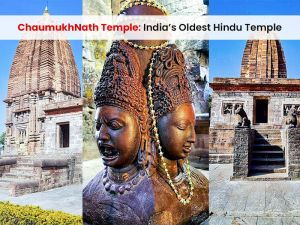Kasol is a small village in Parvati Valley, Himachal Pradesh, near to Kullu. However, it comes on the road from Bhuntur to Manikaran. The town is having an excellent view from all sides, with perfect scenic beauty. Housed on the banks of Parvati river, the little town has become the top offbeat destination in the country. Surrounded by forests, alpine trees, Kasol is a paradise for adventure and nature lovers. Also known as Mini-Isreal, Kasol's natural beauty, flora and fauna are no less than Israel. Also, according to the sources, a decade before Israeli people started visiting the Kasol and then some of them settled here and from then onwards the place becomes the hub of the travellers who are coming here in groups. Israeli people feel safer here because locals villagers are also trying to provide the services according to their need and thus the tourists are contributing a lot to the local villages economy. That's how Kasol becomes the hub of Israeli travellers, and generating employment for the locals in the hospitality sector.

Israel is basically a place known for its religious significance. Today Israel is in news for some different reasons altogether. The news which has really rocked this quaint destination is the unearthing of a cemetery which is reported to be some 2000 years old. Lets get deep into the fact and try hard tho get to the reality.
Israel A cemetery in southern Israeli city of Ashqelon has recently caught the attention of the World. The reason being a burial altar that has been discovered from there. The 24 inch granite structure is reportedly 2000 year old and is decorated with carvings of three bull heads, ribbons, and laurel wreaths. The Altar was unearthed reportedly on May 17, 2010.An ancient port city Ashqelon saw its growth in the Roman period and was influenced by the Hellenistic culture. The place from where this particular altar has been found was a Pagan locality in the bygone era. Being one of the oldest port cities in the Holy Land, Ashgelon is believed to have human settlements as early as the Neolithic period which began around 9, 500 B.C. Astonishing but this is true! Pagans worshipped the Syrian goddess Atargatis, among other gods such as Isis, Apollo, and Hercules.
The bull heads in the altar might signify 'strength and power' and might have close association with god Zeus. According to Dr. Yigal Israel, Ashkelon District Archaeologist of the Israel Antiquities Authority, Just like you see in today's cemeteries, well-to-do families in ancient times also showed off in accordance with their style, status, and financial means. Dr. Israel adds that few burial structures were discovered, which served as family tombs, and cist tombs that were used for interring individuals. Along with the altar, researchers have located many family burial structures at the Ashqelon site thereby pulling a loose thread to uncover some hidden facts and findings. Seems a lot much similarity with Indus Valley Civilization of India. It really boggles up the mind of the connection these two places hold.21st century stands witness to so many connections getting unfurled slowly but leaving its mark for a long time.




















